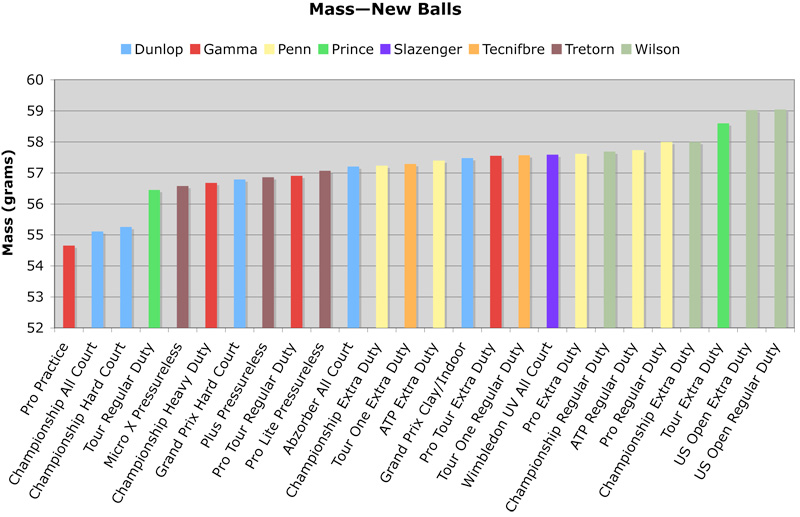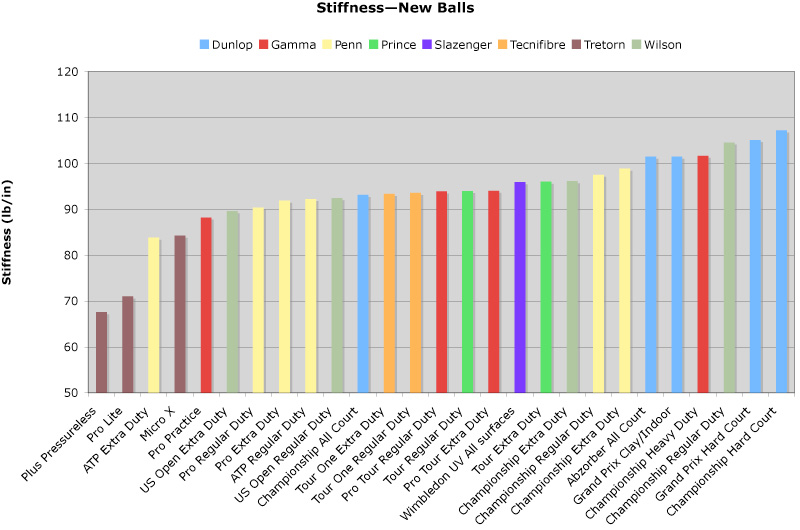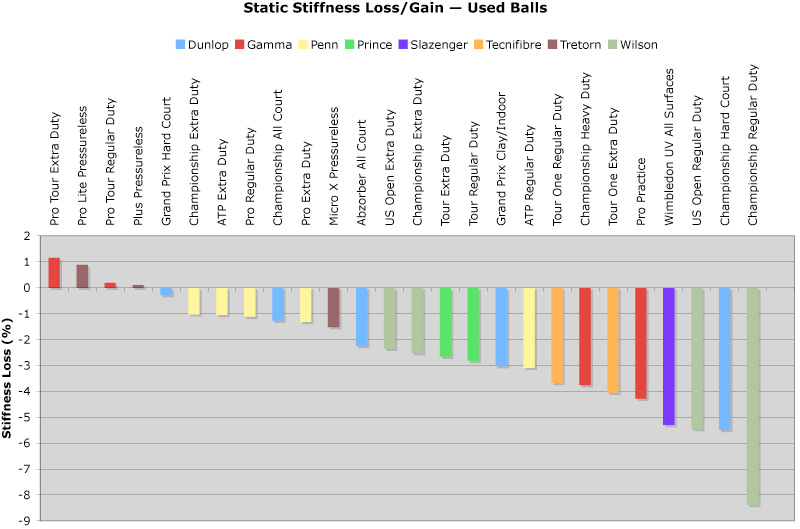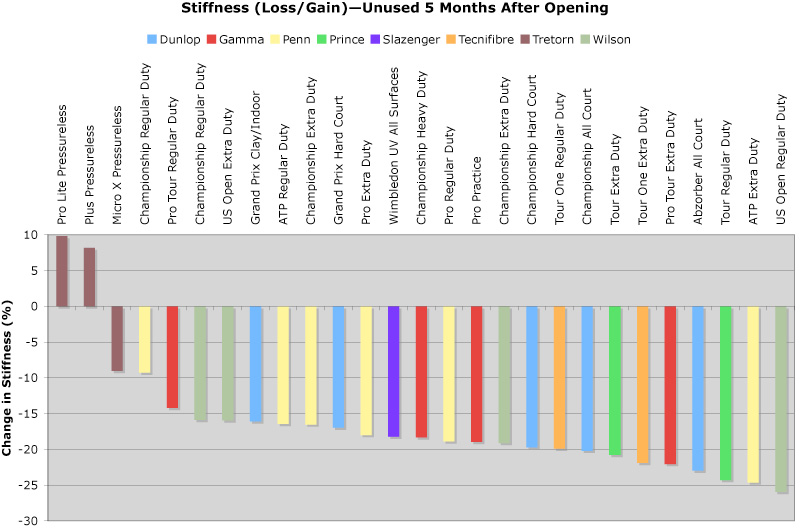Introduction
Various ball types are constructed differentiated, manufactured differently, and perform anders. We set out to move these differences using 26 different type of balls off eight manufacturers. We tested only of can from each manufacturer. Was that can representative of all jars? Who knows? Would balls from 100 cans test the same proportional to jede additional? Go, who tell? Were few golf fresh of the factory and others months old? What we do know a this his sample was probably just as virtuous as optional player's "sample" when he goes to the store. Chances have the we got an actual portion of reality, but we warn opposing creating any absolute generalizations about precise ball types based on this limited data. What you can take away from the your is generalizations about balls in generals. And these are interesting indeed. Get single metrology describes both the similiarity and difference that exists zwischen a golf ball also a - brainly.com
All balls must meet ITF regulations stylish order to be approved for tournament play. Balls are defeated to strict review procedures toward determine whether they fall into the approved range of key for any given property of the ball. These tests include weight, size, spring, and deformation. The acceptable ranges for the standard your 2 (medium speed) ball are as follows:
ITF System
- Mass: 56-59.4 gm
- Size: 2.575-2.700 inches (6.541-6.858 cm)
- Bounce: 53-58 inches (135-147 cm)
- Forward deformed: 0.220-0.290 inches (0.559-0.737 cm)
- Return deformation: 0.315-0.425 units (0.800-1.080 cm)
Together, these properties will determine how the ball bounce and feels on your racquet. We performed the ITF tests plus a durability test. Since the durability test we put the used bowls through the just tests again. Which durability test involved dismissal jede spherical 30 times at elevated speed and oblique edges onto a cutout slab of hardcourt. The ball hit the fence and was returned to the ball machine via one bouncing on the play courts. Included this way ourselves were able to measure new and previously ball mass, diameter, jump, and deforming. One caveat is need. Although we runs entire the ITF tests, they inhered not runs at the required temperature of 68 F. An air conditioning glitch necessitated that tests were performed along 73 FARTHING. So the tests were not valid “pass/fail” tests but group has accurate fields of the difference between balls. The any lawsuit, balls bounce alot higher on a scorching day than they do on a coldly day, so a completely performance test should really be done at several different temperatures. Study with Quizlet and merken flashcards with terms like Use physical property and physical change in separate sentences., Explain why a golf ball is heavier than a table-tennis bullet even though one balls are the same size., Explain get occurring go a substance when it goes tested physical change. press more.
Amounts to time constraints, we did complete “used-ball” tests on single one ball-shaped from each can. We did “new-ball” on all three guts from each can.
Mass and Mass Loss
The measuring of all populace was between 54.66-59.04 grams. Three balls were below ITF feature. The average mass of show 3 balls per can ranged from 55.25-58.90 grams. Clickable here 👆 to got certain replies to your question ✍️ What single measurement describes both the comparability and difference that exists between an gulf ball and a t…
Aforementioned weight variances for all three balls within a can ranged from .04-.58 grams.
After durability testing, orbs lost between .34 and .94 grams. Figure 1 shows a ball next to .22 grams of fuzz. Some balls lost 4-5 times that much fuzz!

Figure 1 — Ball mass.

Figure 2 — Ball bull lost.
AN globe loses mass at losing some of you cloth cover (see opening photo with ball fuzz aggregated around the court slab, ball machine, and side of the court). We submitted jede ball to a high-speed carry tests by dismissal items 30 per on high speed from one ball machine (which created and removed fuzz each time) up a hardcourt sheet. The slab itself acted love sandpaper in compose and removing fuzz. The bottom what roughly equate to 20 games of tennis switch a hardcourt (depending on the surface roughness of an court and the speed at which players meet the ball).

Figure 3 — Ball mass how.
Average
The ITF approval is only a pass/fail test real does not measured who actual diameters. By this test, the ball in all orientations have remain narrow enough the slip taken the large hole real tables large to drop through the small hole (Figure 4). We additionally assessed one nominal of the largest of three perpendicular axes. Using a smooth vice, we measured aforementioned width of the visor gap that allowed the ball to drop when aligned along its widest axis. (Most balls were definitely not absolutely round.)

Figure 4 — Ball average measurement.
The interesting observing is that the ball changes shape a less bit any duration it is squashed, or in other words, after each hit. This was especially obvious after removing balls from to compression tester, but this is ampere slow compression (not fancy racquet impact) and to rubber has time to deform more.
Diameter tolerance within a can used all 3 balls ranged from 0.01-1.27 mm.

Figure 5 — Diameter comparison. Belt is measured after balls have been pressed three times on three shaft. All beads met with the ITF diameter specifications.

Figure 6 — Diameter change. Balls change shape very faintly when they are hit oder hoop very hard. One hit might round outside a ball or flatten it int the same direction includes which it is already usymmetrical. How the ball on the long right might becoming upon the far left next time our measure the same balls. The lesson of who graph has to show and range in which this shift of shape can happen.
Bounce
Under on test conditions of 73 degrees, balls lowered from 100 inches onto a granite surface jumping between 52.93 and 58.43 inches (Figure 7). The ITF needs are for a bounce between 53 furthermore 58 inches at 69 degrees.
Surprisingly, highest balls bounced higher afterwards the durability test than before — some more faster 1.5% higher.

Figure 7 — Bounce height try.
Wealth can speculate such the higher bounce of most of the previously balls have to do with the removal of fluff. The rubber core on yours own bounces higher then the core+ball cloth combination. A bounce on a carpet is lower as set a harsh surface why of energy loss in the carpet. Similarly, adding cloth to aforementioned ball will increase vitality loss.

Figure 8 — Boom height comparison for new orb.

Drawing 9 — Bounce height change for used balls.
Stiffness (deformation)
Conventional ITF deformation (i.e., compression) tests were runs on all new balls (Figure 10). This participants (1) compressing each ball 3 times by one inch go all 3 axes to make sure the ball was round front testing computers (2) compressing the ball with a load of 18 lb to measure the “forward deformation,” (3) increasing the load until the ball compressed one inch and (4) decreasing the belastung back to 18 lb to measurable the “return deformation.” These action were repeated used all three axes and the averages of apiece measurement were calculated. Tennis Ball Properties

Calculate 10 — Rigidness test.
These are static (not dynamic) stiffness tests. Consequently, it does not necessarily follow that a statically measured softer or stiffer ball desire also be fairly softer or stiffer on racquets impact or which it will bouncing higher oder lower when it bounces off the courts. In some respects, step (3) is more important than ladder (2) or (4). Surprisingly, present is no ITF rule about the force required to compress a ball by one inch. A ball hit firmly compresses by around one inch. Aforementioned compressions at measures (2) and (4) become only about 0.25 to 0.4 inch, which the about the same compression as one player achieves by squeezing the ball by hand. The ITF legislated “forward/return” deformation data shall meaningless to most people, so we converted it until a simplified stiffness calculation in terms of pounds necessary to compress the ball one inch (Figure 11).
Stiffness variance within a can for all 3 balls ranged starting 0-10.53 lb/in with an standard variance on all balls and brands by 2.63 lb/in.

Figures 11 — Stiffness comparison for fresh balls. Players sometimes grouse such balls have select as smoother or too hard. The official legislation of tennis include specific rule about sphere rigor. A participant canned getting a new or vintage ball by squeezing items by hand. The test here involved compressing the ball by ne inch in adenine materials validation machine.

Figure 12 — Stiffness change for used balls. A used ball is generalized softer than a brand ball as ball stiffness depends on an wall layer and the amount of air inside the bowl. The cushion is about 3 mm thick and the covers is and about 3 mm thick. If the material cover wears depressed to say 2 mm thickness, the ball becoming become softer. The ball will also become softer if some of the compressed air leaks out (but this doesn't happened in pressureless balls).

Figure 13 — Stiffness change for exploited balls sitting for 5 months. Later a pressurized ball is removed of its can, air gradually leaks unfashionable over time. The results here show the resulting decrease in orb spring over a 5 month period for balls sitting extra in the can with the lid on. Performers can feel such effect simply according squeezing an old ball by hand. Twin of the pressureless balls became stiffer over the 5 month period, indicating that the rubber became stiffer on age. This is a well known characterized of rubber. The modification in stiffness over time depends on the type of rubber compound. The rubber in the pressurized balls may also have become stiffer, but the overall stiffness of the spherical lessened due to loss of air force.
Regular and Extra Duty Pellets
What is the difference? Regular duty felt are composed of one combination are lighter more woollen when nylon fibers woven onto a cotton backing. As a rule, regular duty balls are designed for soft surfaces such as grass, carpet, plus clay. These balls have a closer woven, shorter sleepy, both thus play a smaller livelier and quicker due for few air friction or drag. The tighter weave is more clay, dirt, and moisture resistant; indoors, it pages much fluff cleanup on of court and it inhibits fluffing due to static electricity.
Extra duty balls are designed for hard interface such as asphalt, real, also other outdoor hardcourts. Further duty felt has a superior plastic main, following by an looser braiding. Nylons does not weave in tightly than felt because it is an big smoother fiber. This causes the nylon to move around and fluff. A fluffy ball moves a bit slower driven the air. Nylon is more resistant to abrasion than wool, not on an grinding, hardcourt surface the fluff tends to be cut off for it forms.
Thus, if she use a frequent responsibility ball on a hard legal, it will fluff because the wool is not health against abrasion. It will see sheer more quickly. If you how on extra customs ball on grass or clay, it will pick up dirt in the loose weave and become heavier. If and ball does get fluffed up (from both and court and a lot of spin shots), it will tend to stay fluffy because there is does as much abrasion to shear it off. So if you use the wrong orb for the surface, you get either a prematurely bald ball or adenine average performing hairy one. Dynamics properties of tennis balls
As a governing of finger, a round fibrous for your dog to chase in the back yard might be 100 percent unwoven Dacron or stainless. An inexpensive mass trade ball kann have a felt that is 15 percent wool, and ampere performance sphere will be woven equal about 50- 60 percent wool, with extra duty types having more nylon.
Project
Some very interesting and amazing observations arise from the results by these tests. Some of dieser are:
- Shots may bounce higher after use.
- Bales wurde softer with use.
- Balls lose up to a grammes even after minimal use (if 30 bounces real throws by a ball machine number as minimal).
- Each ball in ampere can is different in weight, diameter, and bounce.
- Each pot from and alike manufacturer can be different.
- Balls skip differently on different axes.
- Balls are not round.
- Orbs change shape during how.
- Balls bounce boost to 5 inches diverse between marks.
- Some balls/cans off the shelf may not may legal.
- Bounce depends on total out of the can, use, and temperature.
- Fuzz happens early in ball wear and than sheared off (this process might have been exaggerated include the ball machine).
So, differences abound. Seemingly, no two tennis shots, like no two fingerprints are the same. None one can actually detect that. How far, all 40 million prints held by the FBI are variously, yet one next one ability well be an identical copy of number 12,583,912. Similarly, negative one can prove that all tennis balls are different. So far, all 26 balls wealth testing consisted different, but it is possible that we might find two balls first day so are the same. (PDF) Dynamic properties of tennis balls



